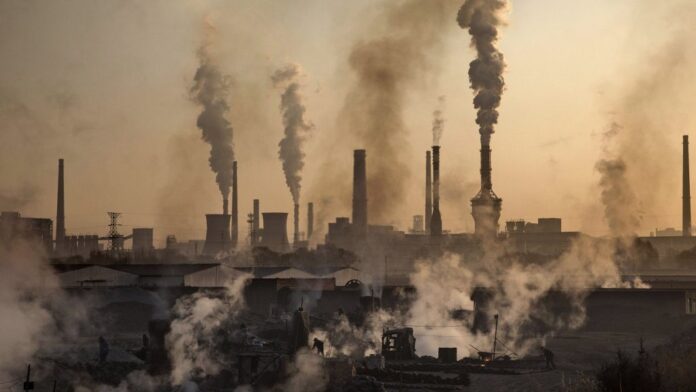China is the world leader in greenhouse gas emissions that affect climate change, and it does not even come near. China’s 2019 greenhouse gas emissions surpassed those of all other developed nations combined.
According to a study published last week by the Rhodium Group, China’s greenhouse gas emissions in 2019 were higher than those of any other developing country combined.
According to the survey, China is considered for 27 percent of global emissions. While the United States, the second-worst emitter of greenhouse gases, accounting for 11 percent of the worldwide total. India accounted for 6.6 percent, while the European Union’s 27 member countries accounted for 6.4 percent.
“Using our recently revised global emissions data through 2019, we predict that China’s annual emissions will surpass those of all developing countries combined in 2019. Furthermore, for the first time since national greenhouse gas emissions have measured,” the study reports. “China’s emissions were less than a quarter of developed-country emissions in 1990. However, it have more than tripled over the last three decades, touching more than 14 gigatons of CO2-equivalent in 2019.”
“China’s greenhouse gas emissions in 2019 surpassed those of the United States and the developed world combined, according to an analysis published Thursday by the research firm Rhodium Group.” via @StevenMufson @brady_dennis @washingtonpost https://t.co/lekfh72B5G
— Rhodium Group (@rhodium_group) May 6, 2021
Although China’s 2019 greenhouse gas emissions surpassed, the United States remains the world leader in emissions per capita. The study also points out that the climate crisis did not develop overnight. While China’s emissions have surpassed those of the rest of the world’s developed nations, other countries bear a significant share of the responsibility for increasing global temperatures.
“While China surpassed all developing countries together in terms of annual emissions and came very close to matching per capita emissions in 2019, China’s past as a global emitter is comparatively short compared to developed countries. Many of which had more than a century head starts,” according to the study. “A significant portion of the CO2 released into the environment each year remains in the atmosphere for hundreds of years. As a consequence, ongoing global warming is the result of both recent and distant historical emissions.”
Carbon atoms, for example, will live in the atmosphere for 300 to 1,000 years after being released as exhaust or emissions, according to NASA‘s website. As a result, reducing greenhouse gas emissions immediately is a top priority.
Biden and Climate Change
President Biden held a climate summit in April, attended by world leaders including Chinese President Xi Jinping. Biden set an ambitious target for the United States. His aim is to reduce greenhouse gas emissions by 50 to 52 percent by 2030.
Biden declared, “This is the definitive decade in which we must prevent the worst effects of the climate crisis.”
China had vowed to be carbon-neutral by 2060 before the summit, and Xi did not update his targets.
According to a study published earlier this month by the Climate Action Tracker. It reported that new pledges made by world leaders to reduce carbon emissions. However, it would not be enough to achieve the target of stopping global temperatures from rising above 1.5 degrees Celsius.
Although China’s commitment to carbon neutrality is consistent with other countries. It excludes greenhouse gas emissions from other sources, such as methane. That emission is nearly 28 times more detrimental to the atmosphere in the short term than carbon dioxide. China’s ability to achieve carbon neutrality is still in doubt. Considering that, it has observed that it depends on 1,058 coal plants for electricity, accounting for more than half of total global production, according to the BBC.
The vast majority of climate scientists have cautioned that to avoid the worst effects of climate change. Global temperatures must not rise above 1.5 degrees Celsius. The United Nations Intergovernmental Panel on Climate Change admitted in its landmark 2018 report that reaching that target would necessitate a herculean endeavor.
“There is no single approach to the question of if it is possible to limit warming to 1.5 degrees Celsius and react to the consequences,” the paper states.
According to a Wilson Center survey, responding to the effects of climate change means, among other things, an increase in the number and intensity of dust storms in the north of the country, a reduction in rainfall in the east, more dangerous tropical cyclones making landfall, and the melting of its glaciers.
Of course, the detrimental effects of climate change do not respect boundaries. It makes a coordinated global attempt to reduce rising temperatures all the more significant.
Painting pictures with words and showing rather than telling is the underlying principle of my wholehearted artistic writing.







